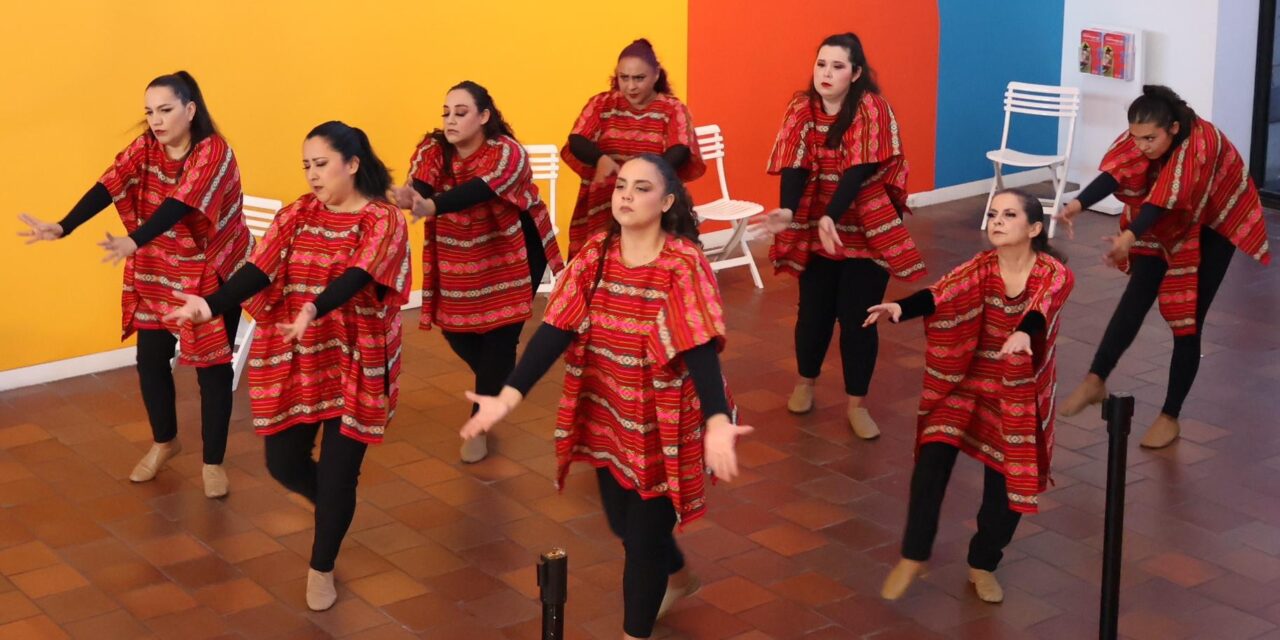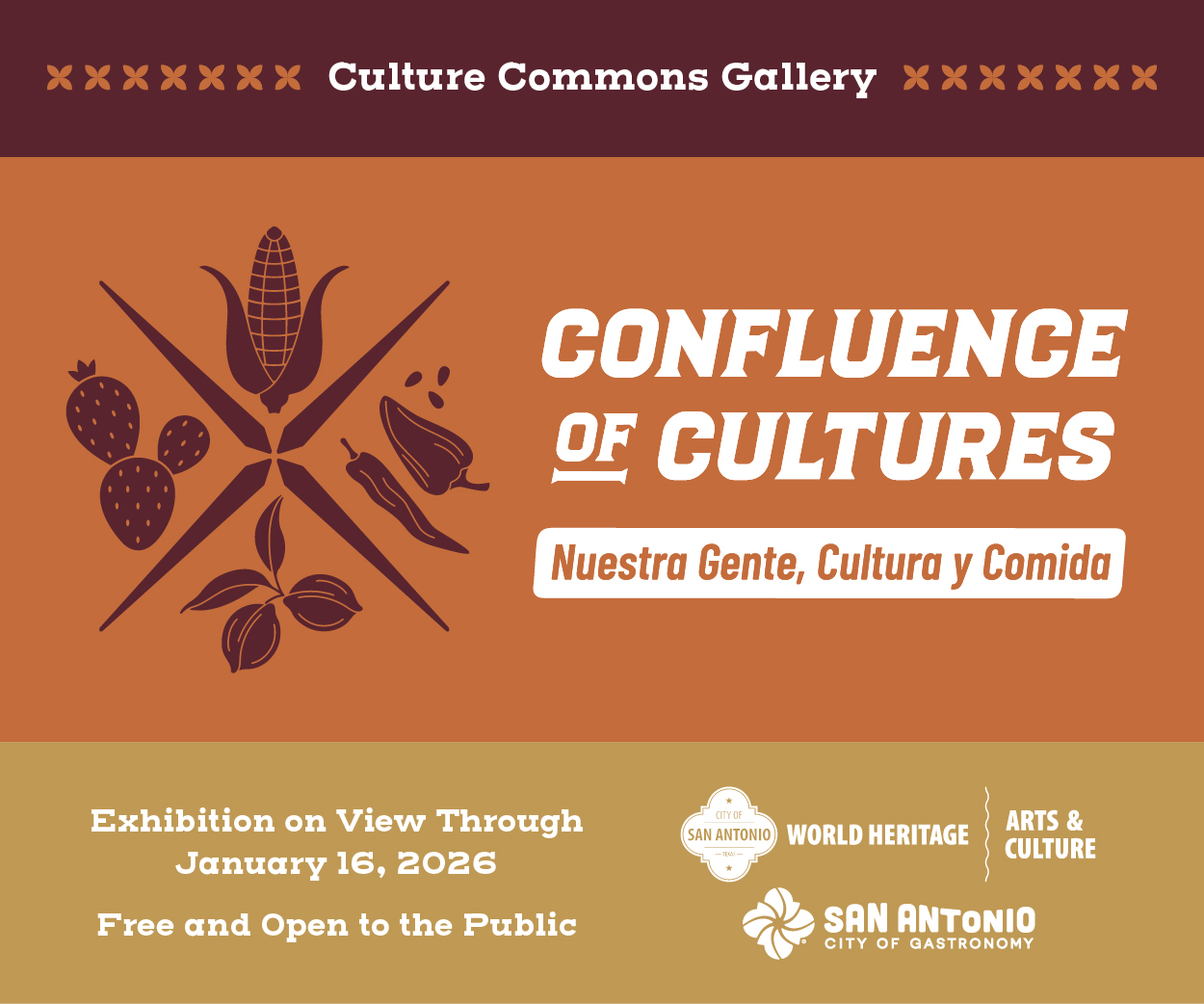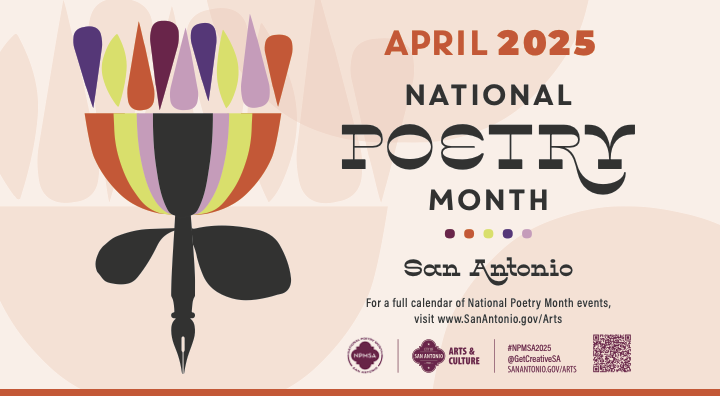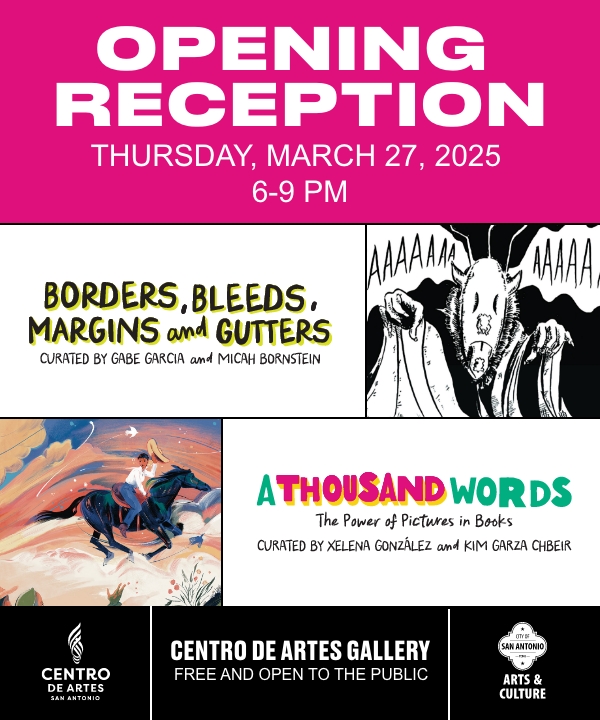The news that the National Gallery of Art in Washington, D.C. recently purchased sixteen screen prints from San Antonio artist Michael Menchaca for its permanent collection excited me. I credit the September 1, 2024 edition of San Antonio Current for calling attention to this amazing accomplishment for Menchaca. Menchaca was only one of five Latino artists chosen from across the U.S. for this year’s acquisition.
Menchaca described the National Gallery of Art’s acquisition of his La Raza Cósmica 20XX print project as representing “a mythical re-interpretation of Jose Vasconcelos’ mestizo identity theory.” Linnete Manrique, a scholar of Vasconcelos, noted that the central thesis of La Raza Cósmica is that the “accelerated mixing of the world’s races will pave the way for the emergence of a new type of people,” the “future Cosmic Race.”
Vasconcelos considered Latin America the “chosen land ripe for the development of mixed racial identities” because of its greater “openness to strangers.” Mexican-born scholar Ilan Stavans explained how the concept of the cosmic race, which positioned the mestizo as the “leader in a new world order,” became a central concept for students in Mexico and the Chicano movement (which took “La Raza” as its slogan) in the United States during the political upheaval of the 1960s.
Menchaca’s La Raza Cósmica employs his artistically created animal and mythical icon stand-ins to depict the intermixing between “Latinx bodies.” Menchaca explained that the sixteen print series represents a “visual hierarchical guide of stereotyped racial and socioeconomic identity.”
The artist blends Vasconcelos’s concepts of racial and ethnic mixing with the 16th-century interpretations of classes and ethnic groups. When the Spaniards colonized the Americas, they introduced stereotypic racial and ethnic concepts. Some of their invented terminology such as mestizo and mulato remain common identity terms today in Mexico and the United States. A child born to a Spaniard and Mexican Indigenous woman, for example, was classified as mestizo in the official Spanish census. Menchaca explores the many dimensions of these blended racial and ethnic characteristics in his work.
Menchaca, a Texas State University and Rhode Island School of Design graduate, is a rising star among Latino artists in the U.S. As a conceptual artist, he has established himself as a major cultural interpreter of Latino identity and existence. His incorporation of the castas paintings, depicting racial and social groups during the Spanish Colonial era, is penetrating. His most recent humorous reinterpretation of La Raza Cósmica and castas is a triumphant feat.
I also receive weekly news from The Discoverer blog. My interest in history and geography leads me to read most of these blog notices. The Discoverer blog recently included San Antonio among five “U.S. Cities with Surprising Art Scenes.” The editors noted that San Antonio “has a cutting-edge art scene that just keeps getting better.” The Discoverer mentioned “a diverse array of incredible street art and public installations as well as high-tech performance spaces and world-renowned art museums.” The blog concluded that there are endless opportunities to immerse oneself in the city’s creative world.
The Discoverer mentioned three artistic spaces: street art, the Blue Star Contemporary, and the McNay Art Museum but overlooked the San Antonio Museum of Art [SAMA], Briscoe Western Art Museum, Artpace, and Ruby City Museum. The Discoverer noted that the McNay includes works by Georgia O’Keefe, Pablo Picasso, and Edward Hopper. The McNay also has work by Diego Rivera and Michael Menchaca. In the late 1920s, the McNay was one of the first museums in the U.S. to purchase a painting by Diego Rivera. Harriett and I donated a dozen Michael Menchaca prints to the McNay Museum from 2012 to 2020. In 2018 the museum organized a solo exhibit for Menchaca.
On September 19 SAMA opens a retrospective exhibit by the scholar, activist, and artist Amalia Mesa-Baines. As a California daughter of Mexican immigrants, the artist has been a vigorous champion of Chicano culture and the experiences of women within that culture. Mesa-Baines, similar to Menchaca, aims at big targets such as colonialism and patriarchy. SAMA has also hosted several collaborative cultural events with local Latino cultural organizations, such as the Guadalupe Cultural Center.
The digital magazine Glasstire, an excellent source of information on artists and art exhibitions, also recently featured San Antonio. Glasstire is the oldest online art magazine in the country, and its team of writers reports on Texas art. In August 2024, Glasstire selected San Antonio’s Dock Space Gallery exhibit “Y Todo Lo Que Somos/Everything We Are” as among the top five art events in Texas. The presentation of this exhibit can be credited to Dock Space Gallery owner Bill Fitzgibbons and gallery manager and curator Rachael Duke. Duke found artists with Westside roots to celebrate August Xicanx Month in San Antonio. The exhibit featured four San Antonio-based artists: Gilbert Martinez, Lee Ortiz, Edward Perez, and Gloria Chavez Ramirez.
The Dock Space exhibition was part of San Antonio’s citywide celebration commemorating the Chicano Arts Movement as Xicanx Month. A busy travel schedule kept me from attending the opening of the four San Antonians’ exhibit “Y Todo Lo Que Somos/Everything We Are.” However, I enjoyed Un Poquito de Todo [A Little of Everything] in the Dock Space Annex by another San Antonio native, Jose Cosme.
Cosme is proud of his Westside roots. From his earliest days as an artist, he incorporated Mexican American cultural themes. Cosme taught himself to draw and paint but also learned much from artists and gallery owners Andy Benavides and Joe “Gallista” Lopez. Benavides, owner of the 1906 Studio, hired Cosme in 1999. Working with Andy Benavides in the studio and gallery, Cosme learned glass artwork and participated in mural painting with the San Anto Cultural Arts group. Joe Lopez, who owned the Gallista Gallery across the street from Benavides’ 1906 Studio, later hired Cosme to help run the Gallista Gallery.
At Gallista Gallery, Cosme met dozens of Latino artists who exhibited there. He also met Ramon Vasquez y Sanchez of the Centro Cultural Aztlan which at the time was at Las Palmas Shopping Center near the Westside. Vasquez y Sanchez and Malena Gonzalez-Cid, the current Centro Cultural Aztlan director, invited Cosme to participate in the Centro’s Day of the Dead and Virgin de Guadalupe exhibits over the past twenty years.
Cosme’s work in Un Poquito De Todo [A Little of Everything] includes paintings, small installations, and glasswork. Three pieces in the show merit second looks including his “2 Pac” acrylic painting of famous rapper Tupac. Cosme’s “Bird Man” portrait pays tribute to a street vendor who sold hand-made birds in the Westside. Cosme also constructed a two-headed Aztec snake motif using cut glass. The work was inspired by Mary Agnes Rodriguez’s mural design at the La India herb store on Commerce Street.
News outlets such as the San Antonio Current, The Discoverer, Glasstire, and La Prensa are contributing to keeping Texans informed of the many exciting Latino art exhibitions in San Antonio and beyond and are recognizing San Antonio’s growing prominence as a “cutting-edge” art scene.










